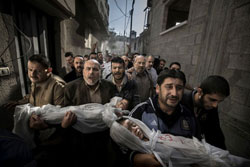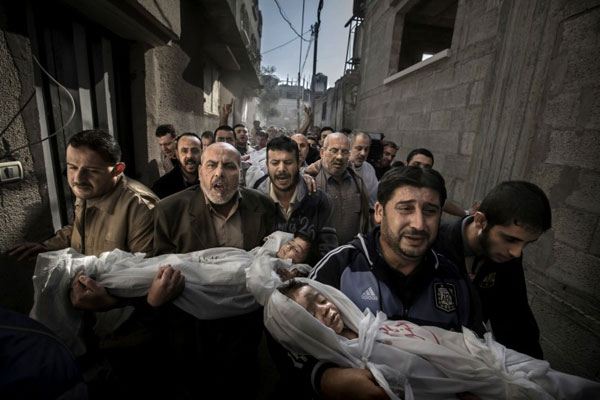WPPA to overhaul post-processing rules for 2014 competition
posted Thursday, October 3, 2013 at 11:58 AM EST

Earlier this year, the selection of Paul Hansen's Gaza Burial as the Photo of the Year for the 2013 World Press Photo Awards lead to a storm of criticism, with accusations of over manipulation of the final image. We delved in-depth into what modifications occurred and the WPPA launched its own probe — and now it seems that the 2014 competition will have more stringent rules in place for post-processing.
The winning image was cleared after expert examination, in which one expert stated:
“When I compare the RAW file with the prizewinning version I can indeed see that there has been a fair amount of post-production, in the sense that some areas have been made lighter and others darker. But regarding the positions of each pixel, all of them are exactly in the same place in the JPEG (the prizewinning image) as they are in the RAW file. I would therefore rule out any question of a composite image.”
However, today the World Press Photo organization released some information about the 2014 competition (whose entries open in December). In addition to naming Gary Knight as the new chair, the group has said that there will be some changes to the rules when it comes to post-processing:
The 2014 Photo Contest edition will include a number of changes. Michiel Munneke, Managing Director, World Press Photo, explains: “There has been a lot of discussion and widespread speculation regarding the permissible levels in post-processing of image files in the contest. We have evaluated the contest rules and protocols and examined how to create more transparency, and we have changed the procedures for examining the files during the judging. We will announce further details when the 2014 Photo Contest opens for entries later this year, but the bottom line is that we will need to be able to rely on the integrity and professionalism of the participating photographers.”
We don't yet know what exactly these rules will entail, but anything which cracks down on the likelihood of faked images is definitely a good thing. Once the competition opens in December we'll know for sure.
